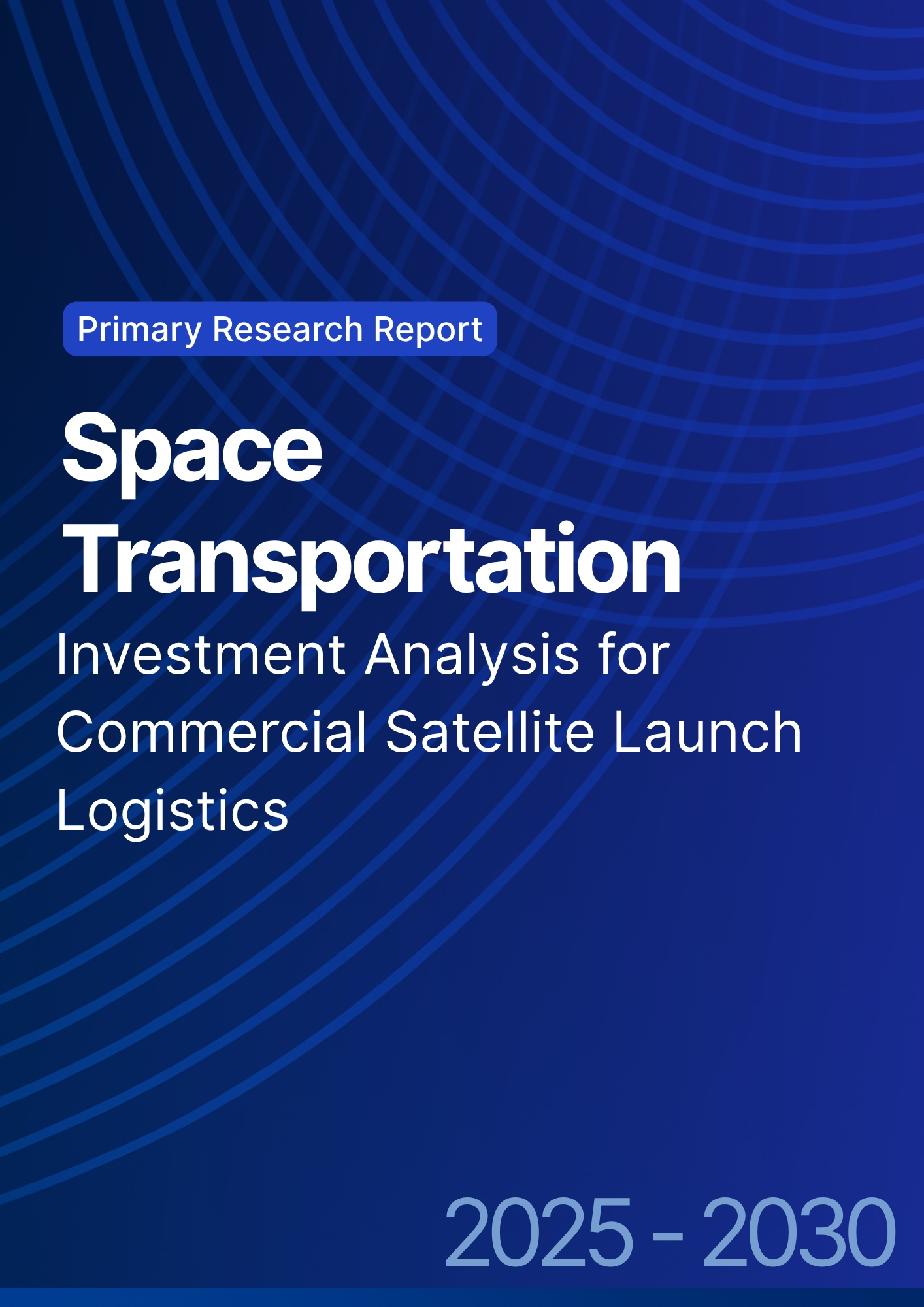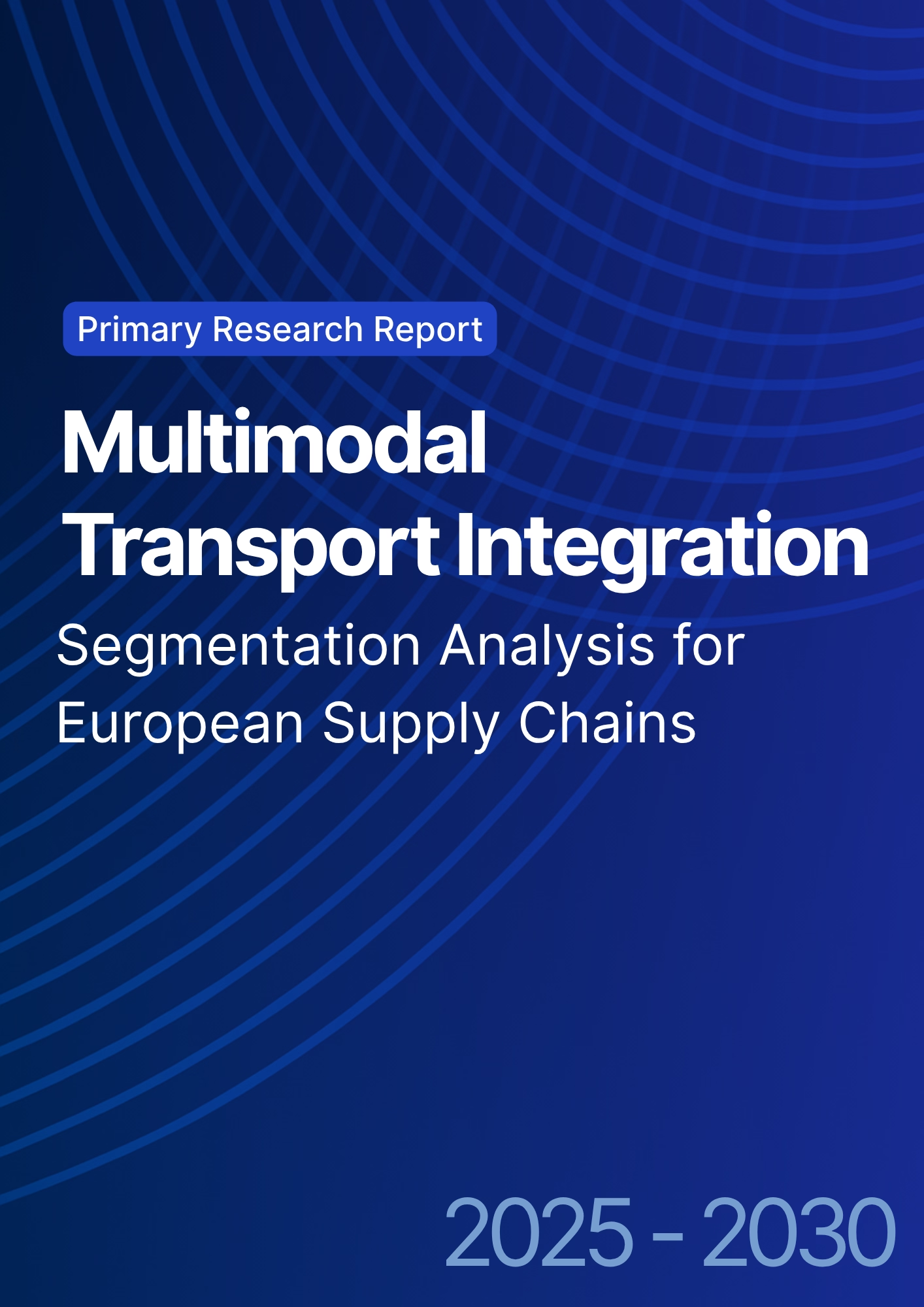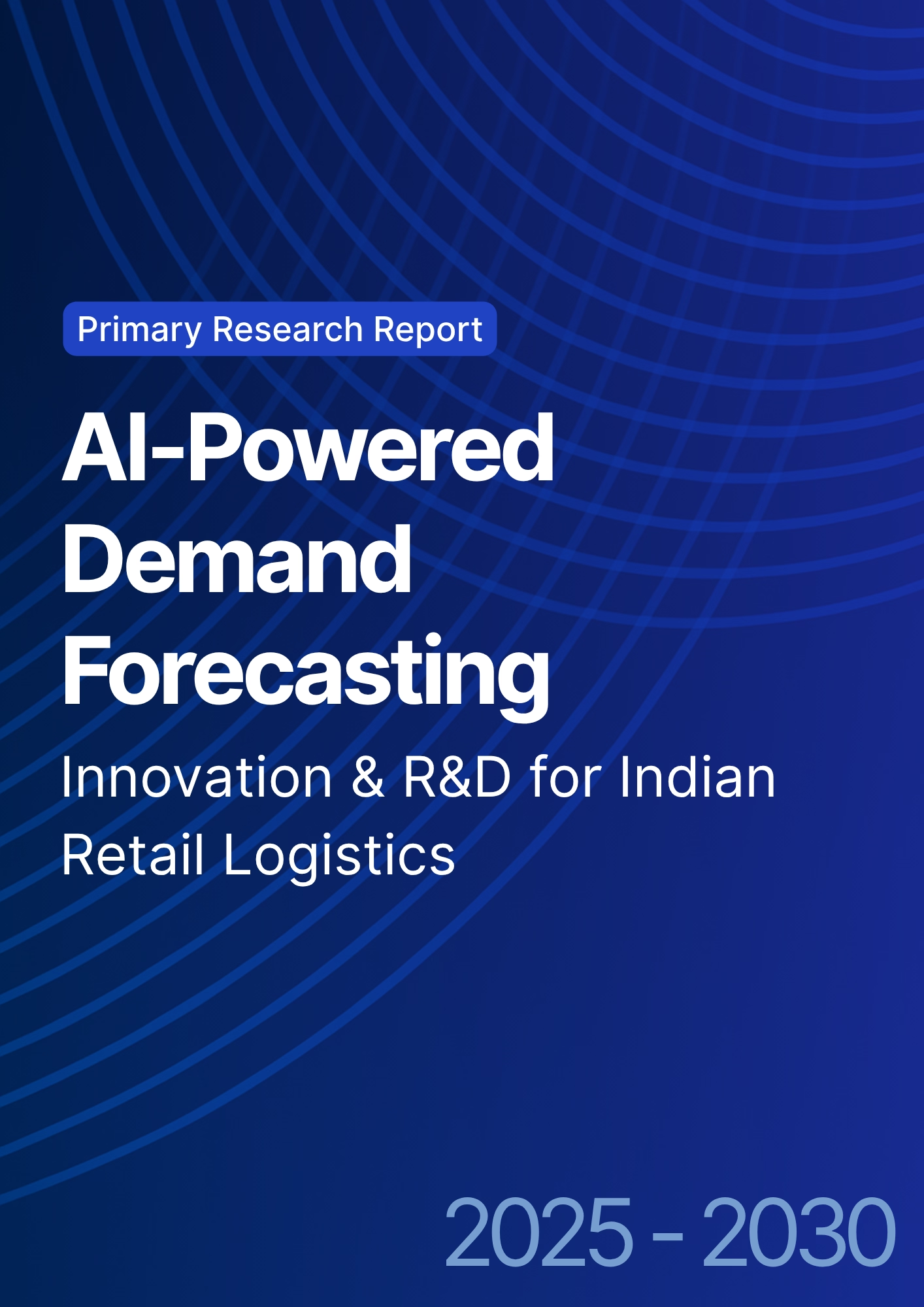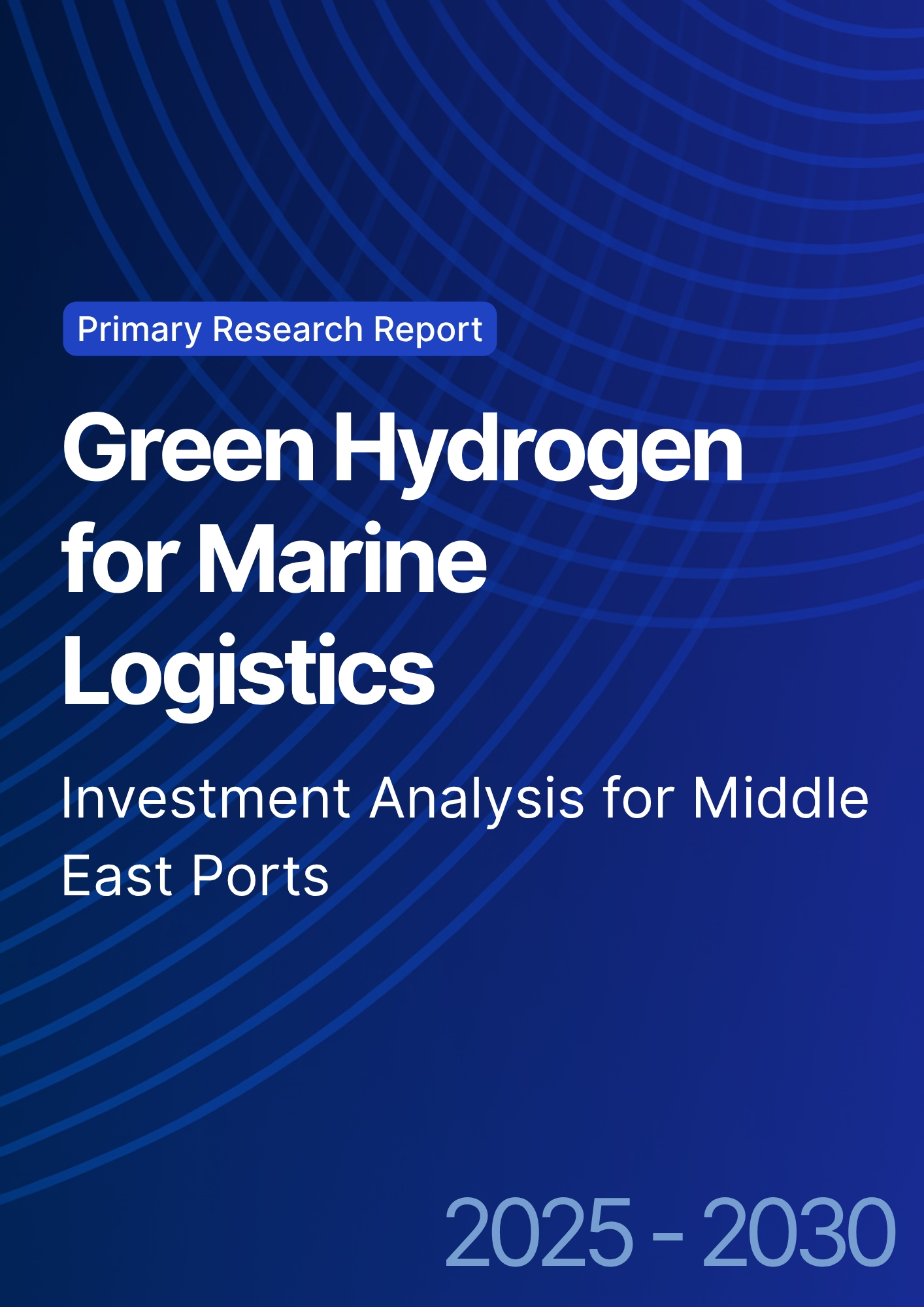

68 Circular Road, #02-01 049422, Singapore
Revenue Tower, Scbd, Jakarta 12190, Indonesia
4th Floor, Pinnacle Business Park, Andheri East, Mumbai, 400093
Cinnabar Hills, Embassy Golf Links Business Park, Bengaluru, Karnataka 560071
Connect With Us
AI and Machine Learning in Logistics: Enhancing Efficiency and Predictive Capabilities in Southeast Asia - Technological Advancements
Between 2025 and 2030, the AI and Machine Learning (ML) logistics market in Southeast Asia, led by Thailand, expands from $2.4B to $9.1B (CAGR 30.2%). Growing regional trade, automation demand, and e-commerce logistics are driving AI-enabled forecasting, route optimization, and demand prediction. Thailand, as ASEAN’s logistics hub, represents 27% of the regional AI logistics investment. Predictive analytics reduce delivery delays by 32%, while AI-powered warehouse systems cut inventory errors by 40%. By 2030, 65% of logistics companies in Southeast Asia will integrate AI into their supply chains, improving transparency, forecasting accuracy, and cost control.
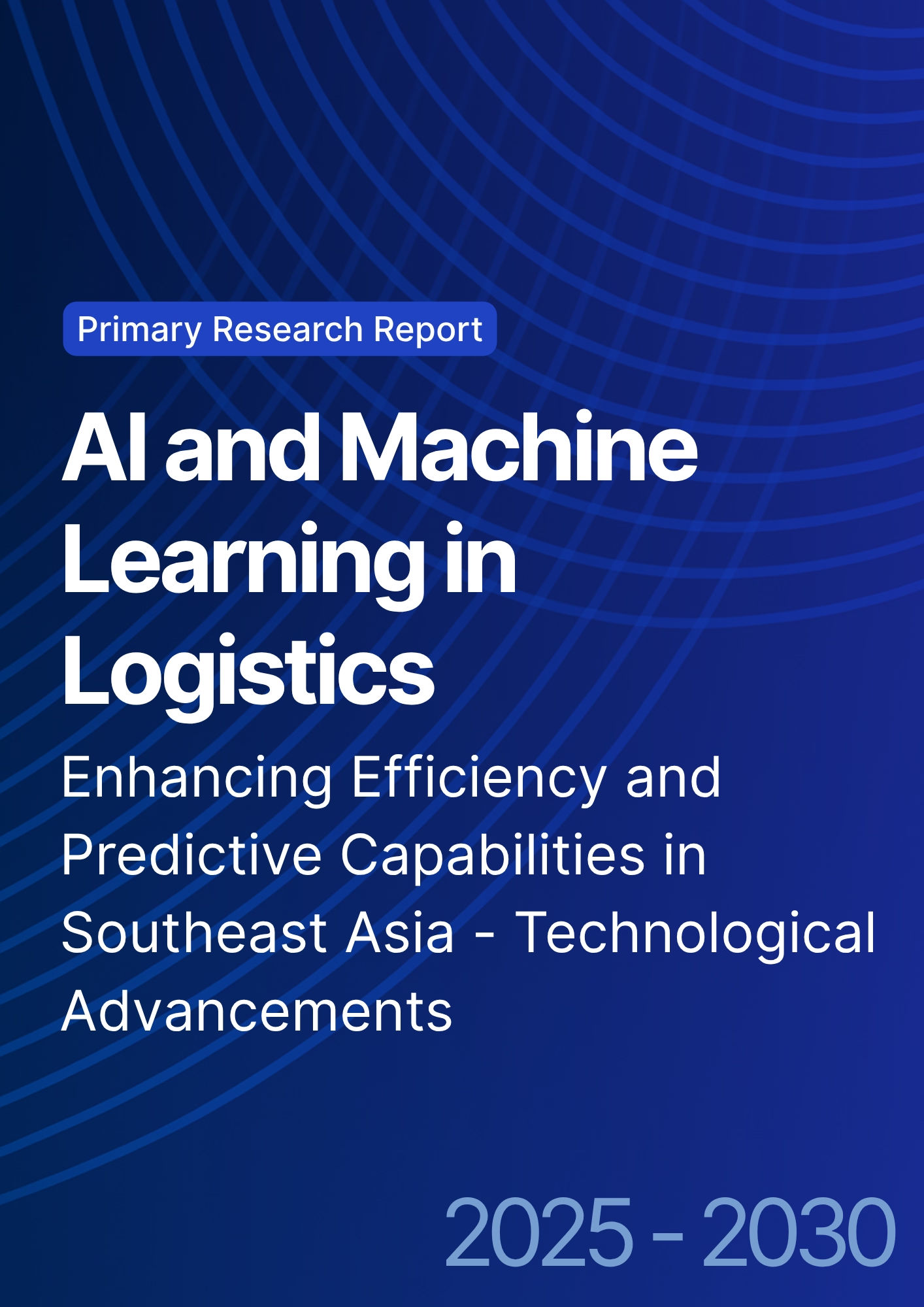
What's Covered?
Report Summary
Key Takeaways
- Market size: $2.4B → $9.1B (CAGR 30.2%).
- Thailand accounts for 27% of AI logistics investment in Southeast Asia.
- Delivery delays reduced by 32% via predictive analytics.
- Inventory accuracy improves by 40% using AI-based warehouse systems.
- 65% of logistics companies adopt AI solutions by 2030.
- Route optimization boosts fleet efficiency by 25%.
- Fuel costs decrease by 18% from real-time data-driven planning.
- Warehouse automation in Thailand grows +42% annually.
- Labor productivity increases by 28% with AI task scheduling.
- Predictive maintenance models reduce equipment downtime by 33%.
Key Metrics
Market Size & Share
The AI and ML logistics market in Southeast Asia expands from $2.4B in 2025 to $9.1B by 2030, at a CAGR of 30.2%. Thailand, emerging as the regional logistics hub under its Thailand 4.0 strategy, captures 27% of total investment, supported by government-backed AI innovation zones and digital freight corridors. The adoption of AI-driven predictive analytics helps logistics providers forecast demand with 92% accuracy, reducing delivery delays by 32%. Major trade hubs like Laem Chabang Port and Bangkok Free Trade Zone are deploying AI-powered yard management systems that optimize container routing, cutting turnaround times by 25%. Across the region, Singapore, Vietnam, and Malaysia are also implementing machine learning logistics platforms to manage cross-border shipments and customs automation. Thailand’s logistics startups, such as Deliveree, Flash Express, and GIZTIX, are integrating AI route optimization tools that lower fuel usage by 18% and improve fleet utilization. By 2030, over 65% of logistics companies in Southeast Asia will use AI algorithms for real-time route optimization, demand forecasting, and predictive maintenance, improving delivery reliability and reducing costs. This expansion aligns with the ASEAN Digital Masterplan 2030, which prioritizes AI integration in trade and supply chain ecosystems to enhance regional efficiency, competitiveness, and infrastructure scalability.
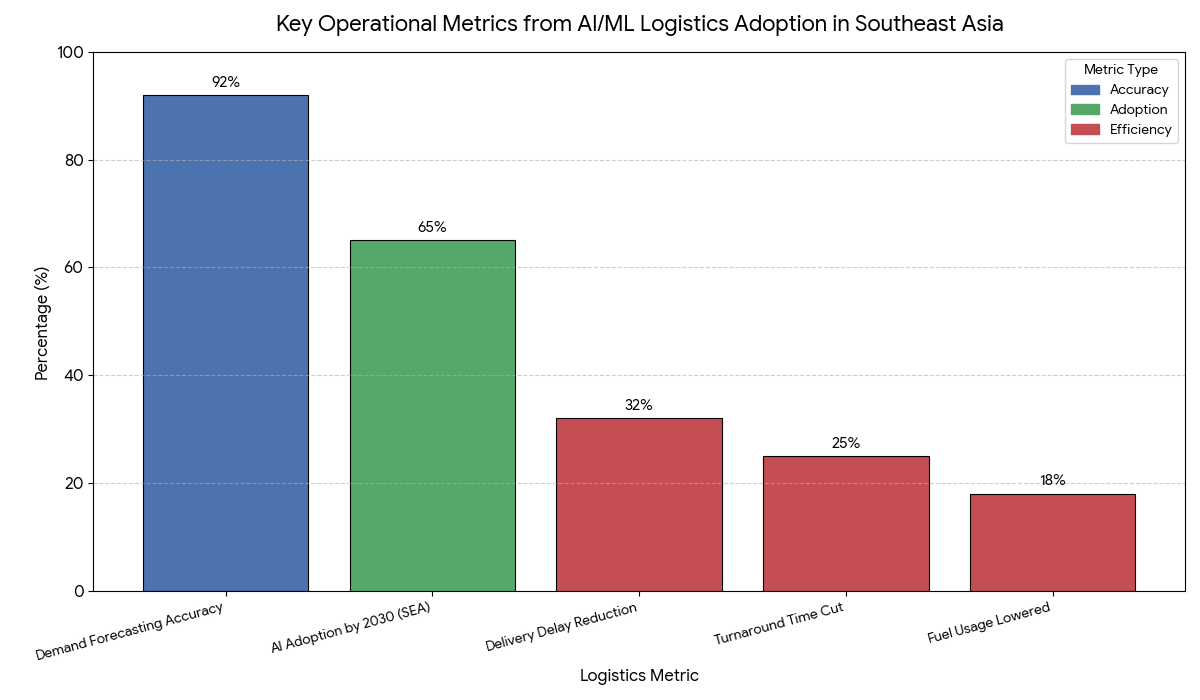
Market Analysis
The logistics industry in Southeast Asia is transitioning from manual operations to AI-powered automation to enhance speed, accuracy, and resilience. Machine learning models are increasingly used for demand forecasting, improving stock-level precision and reducing overstocking by 22%. In Thailand, AI-enabled predictive route planning systems improve fleet efficiency by 25%, while dynamic scheduling reduces idle time for vehicles and labor. Smart warehouses across the region are deploying AI-driven robotics and vision systems, improving inventory tracking accuracy by 40%. The Thailand Board of Investment (BOI) is offering tax incentives and 5G infrastructure support to attract investments in AI logistics. By 2030, AI-based predictive maintenance will cut equipment downtime by 33%, and AI analytics platforms will reduce operational waste by 20%. The ASEAN Digital Corridor further accelerates interoperability among Thailand, Vietnam, and Malaysia, enabling real-time data exchange between freight operators. The adoption of AI-driven control towers for logistics analytics grows +38% annually, centralizing decision-making across multi-country supply chains. Private players such as DHL Asia Pacific, Kerry Logistics, and SCG Logistics are leading this digital transformation by implementing AI-powered visibility platforms. The combination of predictive modeling, IoT data streams, and automated workflows positions Southeast Asia’s logistics ecosystem for double-digit efficiency gains by 2030.
Trends & Insights
Several trends define the next wave of AI adoption in logistics across Southeast Asia. (1) Predictive Logistics: AI algorithms enable demand forecasting with 92% accuracy, reducing delivery delays by 32%. (2) Autonomous Warehouses: By 2030, over 55% of warehouses in Thailand will operate partially automated, using AI-driven robotics for inventory management. (3) Smart Fleet Management: Machine learning route optimization increases fleet efficiency by 25% and reduces fuel consumption by 18%, cutting logistics emissions by 20%. (4) Predictive Maintenance: AI-based maintenance systems lower equipment downtime by 33%, improving asset utilization. (5) AI in Port Logistics: Thailand’s Laem Chabang Port adopts AI container scheduling systems, reducing average dwell time by 27%. (6) Data Integration Platforms: Cross-border logistics platforms powered by AI allow real-time visibility across ASEAN supply chains. (7) Sustainability: AI supports carbon footprint tracking, aligning with Thailand’s Net Zero 2050 roadmap. (8) Public-Private Partnerships: Government-backed initiatives like the AI Logistics Sandbox (Bangkok) are fostering pilot programs for autonomous trucks and digital twins. (9) AI Talent Development: Investments in logistics AI training grow +40%, led by ASEAN universities. Collectively, these trends transform Southeast Asia into an AI logistics innovation hub, optimizing every aspect of trade and transportation.
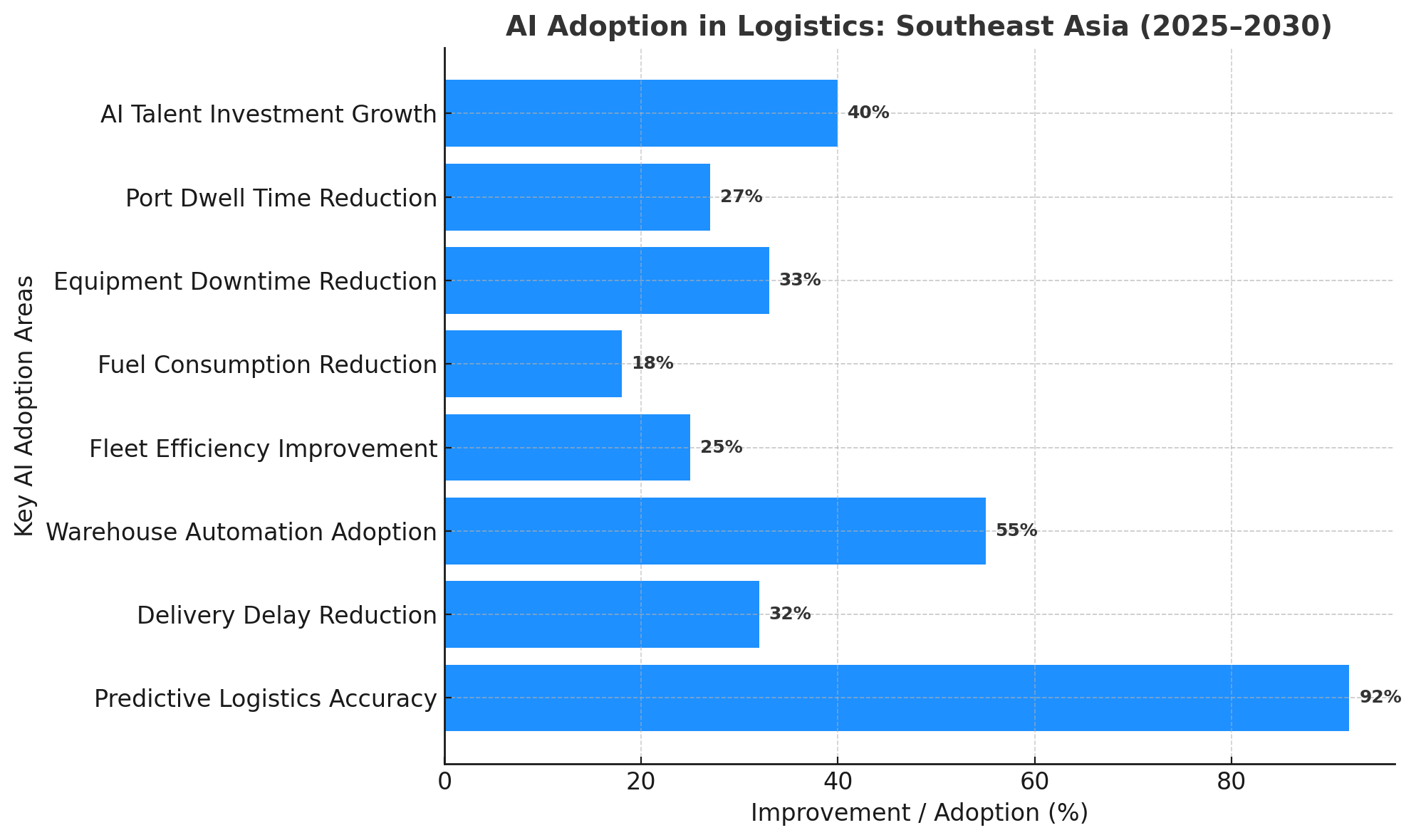
Segment Analysis
The AI logistics ecosystem in Southeast Asia is segmented into freight management, warehouse automation, and fleet optimization. Freight management dominates with 45% market share, where AI platforms manage real-time routing and border clearance, improving delivery lead times by 28%. Warehouse automation, holding 35%, focuses on AI-powered robotic picking systems, inventory sensors, and computer vision, reducing stock variance by 40%. Fleet optimization, comprising 20%, leverages machine learning route algorithms to increase delivery capacity utilization by 25%. Thailand leads the adoption curve, accounting for 27% of Southeast Asia’s AI logistics investment, particularly in Bangkok, Chonburi, and Rayong, where industrial zones integrate AI monitoring systems into warehouse clusters. E-commerce logistics represents the fastest-growing segment (+41% CAGR), with AI-enabled fulfillment centers optimizing same-day delivery. Manufacturing logistics follows, as Thailand’s automotive and electronics sectors adopt AI predictive analytics for just-in-time (JIT) operations. By 2030, AI-driven warehouse control systems will handle 65% of order processing in Thailand’s logistics sector. The growing ecosystem of startups and global players accelerates competitive differentiation, fostering regional supply chain resilience and cross-border digital alignment under the ASEAN Smart Logistics Framework.
Geography Analysis
Thailand leads the AI logistics transformation in Southeast Asia, accounting for 27% of total regional investment. The nation’s strategic position between China and ASEAN trade routes makes it a central hub for AI-enabled logistics innovation. Bangkok and Laem Chabang host over 40% of AI pilot projects, including autonomous freight corridors and AI warehouse hubs. Singapore follows, capturing 20% of the regional market, with AI-driven port logistics integrated at PSA Terminals. Vietnam (18%) and Malaysia (15%) are accelerating adoption through AI visibility platforms and predictive cross-border scheduling systems. Indonesia (12%) and the Philippines (8%) are scaling logistics AI in urban last-mile delivery networks. Across the Asia-Pacific, Japan and South Korea act as technology exporters, partnering with Thai and ASEAN logistics companies to deploy AI frameworks. Regional trade driven by RCEP and ASEAN economic corridors fosters data standardization and interoperability. By 2030, AI will support 95% of Thailand’s major logistics hubs through digital twins and predictive dashboards, cutting costs and improving sustainability. The Asia-Pacific AI logistics network becomes globally recognized as a benchmark for predictive transportation efficiency, driven by Thailand’s leadership in cross-border integration, public-private AI funding, and infrastructure modernization.

Competitive Landscape
The AI logistics market in Southeast Asia, especially Thailand, is defined by strong collaboration between tech firms, logistics operators, and government bodies. DHL, Kerry Logistics, and SCG Logistics are the dominant players, collectively holding 45% of market share through early AI adoption. Technology providers such as Google Cloud, AWS, Huawei, and Microsoft deliver AI infrastructure for data analytics, machine learning, and IoT integration. Thai startups like Deliveree, Ecartstudio, and GIZTIX are emerging as regional leaders in AI-powered supply chain software. Public-private partnerships are central to growth — the Thailand AI and Robotics Cluster (TARA) supports over $500M in AI logistics R&D funding. AI-based visibility platforms developed by Infor, Blue Yonder, and FourKites provide predictive shipment analytics for real-time decision-making. Warehouse automation leaders such as Geek+, AutoStore, and GreyOrange are expanding in Thailand’s Eastern Economic Corridor (EEC), establishing local assembly bases. Investment inflows from Japan, Singapore, and South Korea drive capacity expansion, while R&D collaborations between Thai universities and logistics giants advance the region’s AI talent pool. By 2030, AI and ML systems will define every aspect of Southeast Asia’s logistics infrastructure, creating a data-driven, predictive, and resilient trade ecosystem led by Thailand’s innovation-first approach.
Report Details
Proceed To Buy
Want a More Customized Experience?
- Request a Customized Transcript: Submit your own questions or specify changes. We’ll conduct a new call with the industry expert, covering both the original and your additional questions. You’ll receive an updated report for a small fee over the standard price.
- Request a Direct Call with the Expert: If you prefer a live conversation, we can facilitate a call between you and the expert. After the call, you’ll get the full recording, a verbatim transcript, and continued platform access to query the content and more.


68 Circular Road, #02-01 049422, Singapore
Revenue Tower, Scbd, Jakarta 12190, Indonesia
4th Floor, Pinnacle Business Park, Andheri East, Mumbai, 400093
Cinnabar Hills, Embassy Golf Links Business Park, Bengaluru, Karnataka 560071
Request Custom Transcript
Related Transcripts


68 Circular Road, #02-01 049422, Singapore
Revenue Tower, Scbd, Jakarta 12190, Indonesia
4th Floor, Pinnacle Business Park, Andheri East, Mumbai, 400093
Cinnabar Hills, Embassy Golf Links Business Park, Bengaluru, Karnataka 560071





